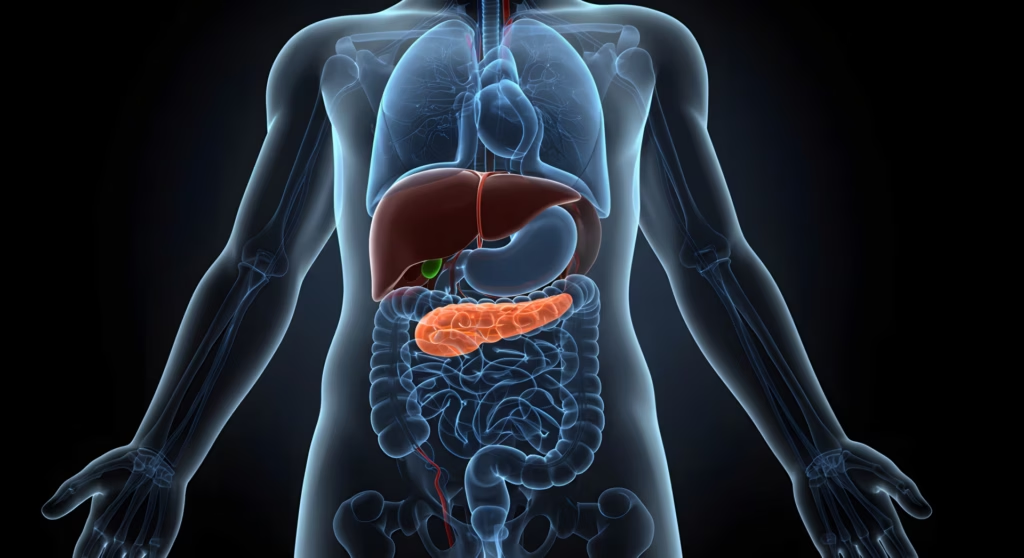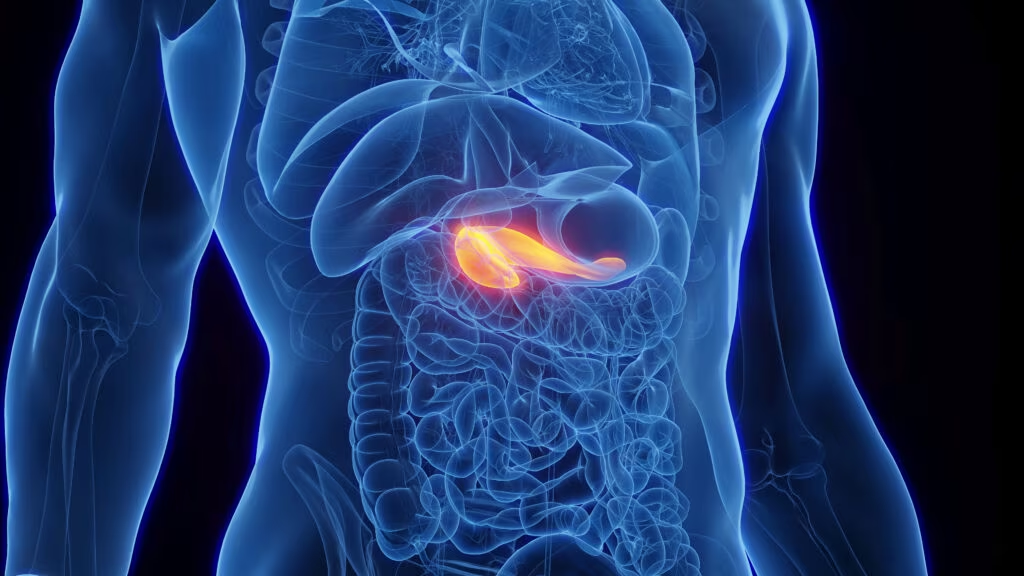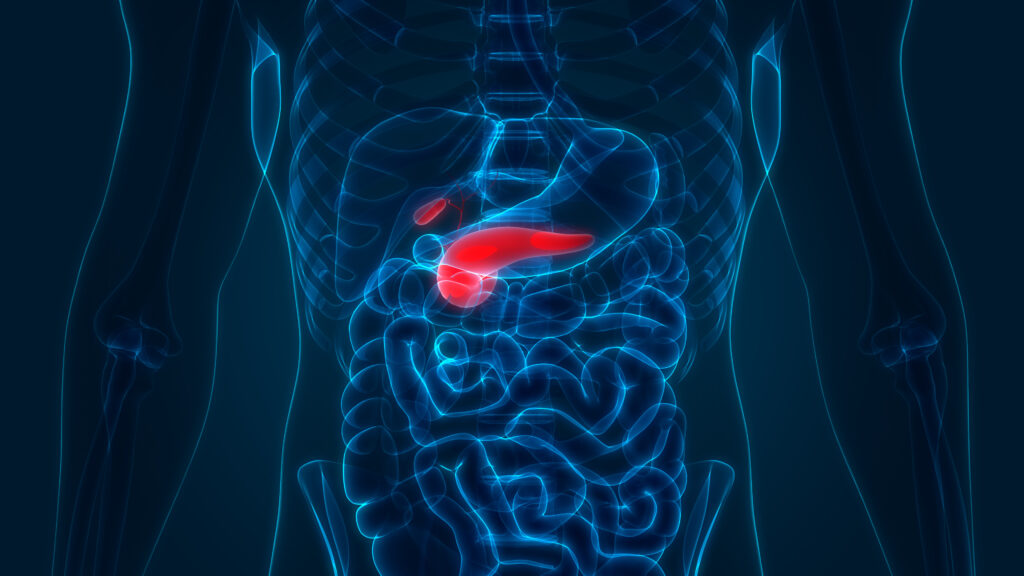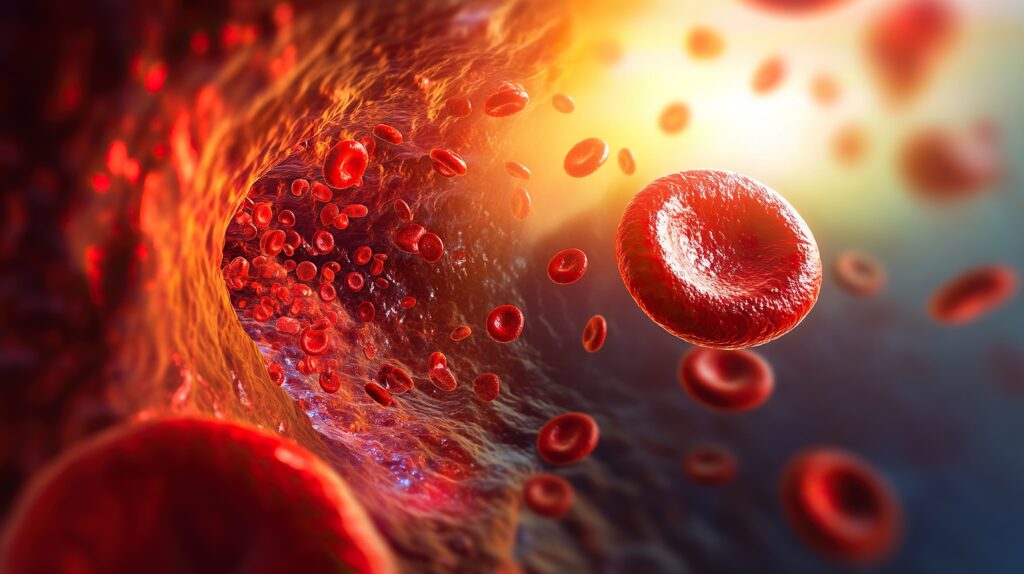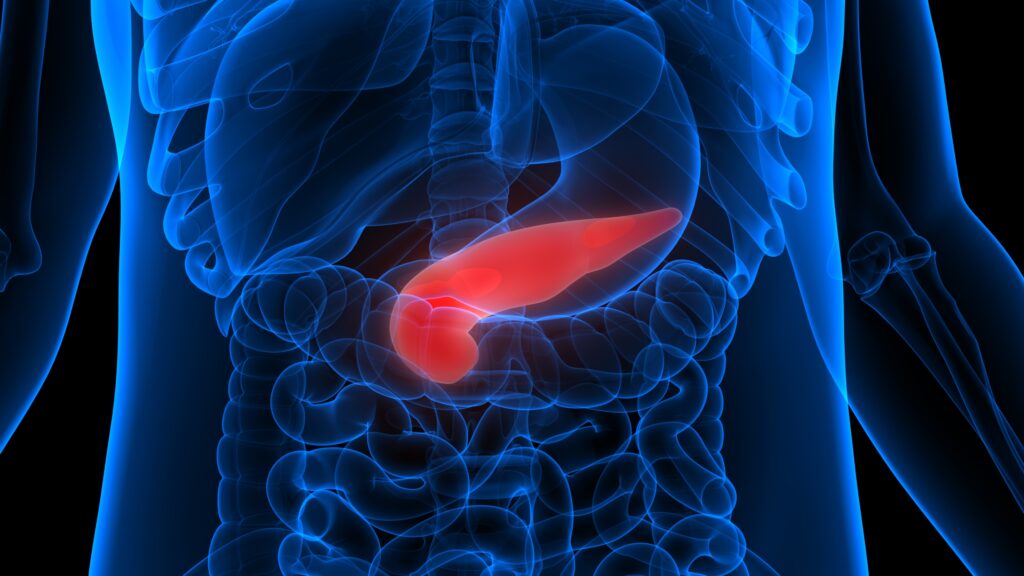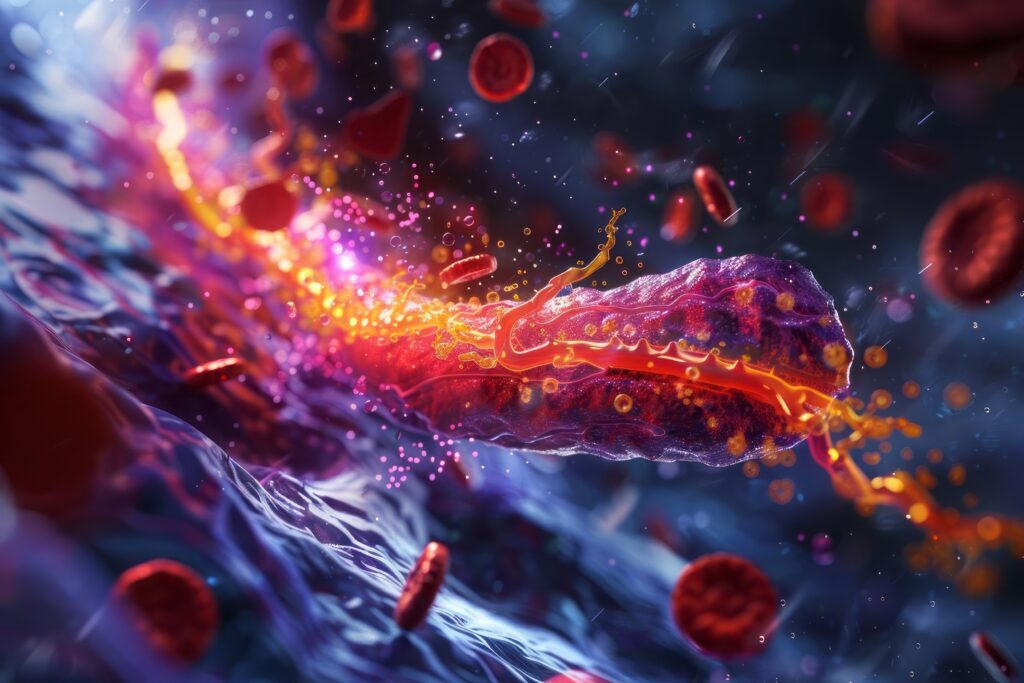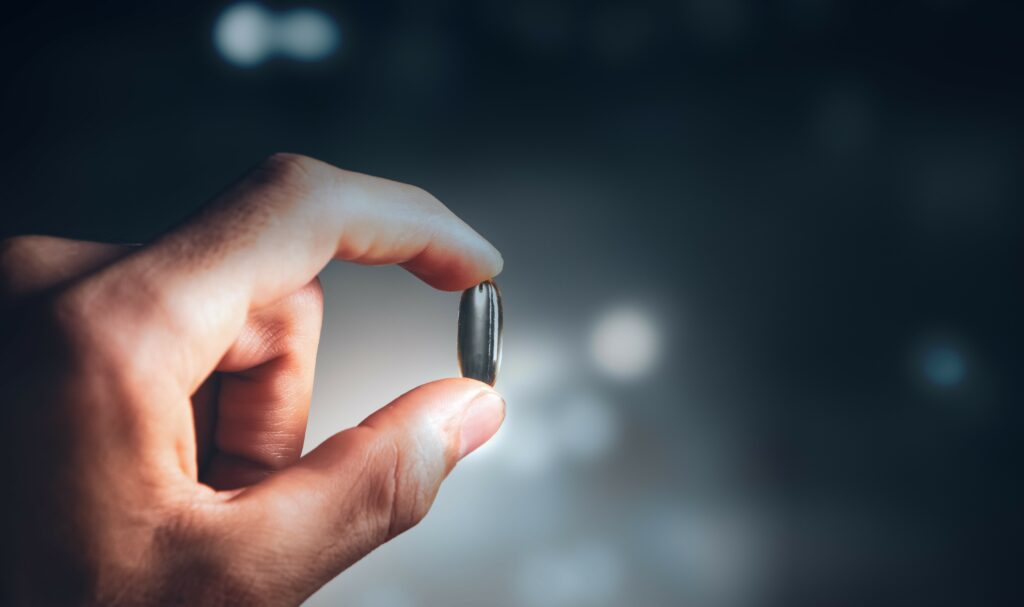The worldwide prevalence of type 2 diabetes is rising dramatically, leading to an increase in the complications of this disease. The total number of people with diabetes may reach 440 million worldwide by 2030.1 Due to this development, and the fact that most patients do not reach their therapeutic goals, novel, effective, and safe treatment options are needed.
The worldwide prevalence of type 2 diabetes is rising dramatically, leading to an increase in the complications of this disease. The total number of people with diabetes may reach 440 million worldwide by 2030.1 Due to this development, and the fact that most patients do not reach their therapeutic goals, novel, effective, and safe treatment options are needed.
Type 2 diabetes is characterized by insulin resistance and islet cell dysfunction. While insulin resistance is constant in the course of type 2 diabetes, islet function continuously declines and is the driving force for disease progression. Hyperglycemia, free fatty acids, cytokines, adipokines, and toxic metabolic products aggravate the loss of beta-cell function and mass. In addition, the alpha cells in the islets develop a glucagon secretion disturbance. In healthy subjects, glucagon secretion is suppressed under hyperglycemic conditions, whereas in type 2 diabetes secretion is elevated, possibly contributing to excessive glucose production by the liver.2
The therapeutic options currently available are limited and do not address the problem of islet-cell dysfunction. Classic insulin secretagogs (sulfonylureas and glinides) exclusively stimulate insulin secretion, metformin and glitazones act on insulin resistance, and alphaglucosidase inhibitors delay the breakdown of complex carbohydrates. Exogenous insulin replaces the endogenous secretory insulin deficit, although it potentially causes weight gain and hypoglycemia. The progressive loss of islet function observed in type 2 diabetes is not ameliorated by any of the current therapeutic options.3
The incretin hormones glucose-dependent insulinotropic peptide (GIP) and glucagon-like peptide-1 (GLP-1) stimulate insulin secretion after a meal. They are responsible for the fact that orally administered glucose evokes a greater insulin response than an intravenously administered glucose infusion calculated to lead to identical serum glucose excursions. This phenomenon is termed the incretin effect and is caused by the above-mentioned incretin hormones.4 The incretin effect is reduced or even absent in patients with type 2 diabetes.5
The promising therapeutic potential of GLP-1 as a pharmacological tool for treating type 2 diabetes was discovered in the 1990s. In contrast to other insulinotropic agents, e.g. sulfonylureas, the insulinotropic effect of GLP-1 depends on the actual glucose concentration, providing the possibility of glucose normalization without the risk of hypoglycemia. In patients with type 2 diabetes, exogenous GLP-1 stimulates insulin secretion and normalizes both fasting and post-prandial blood glucose. It further restores the defective first phase of insulin secretion in type 2 diabetes.6
Besides its glucose-lowering effects, GLP-1 has additional noninsulinotropic physiological actions that may be advantageous in type 2 diabetes therapy: it suppresses glucagon secretion from the alpha cells and slows gastric emptying. Additionally, GLP-1 acts as a mediator of satiety in the hypothalamus, where it is also found as a neurotransmitter.3 In patients with type 2 diabetes, exogenous GLP-1 infusions cause weight loss.7 Furthermore, GLP-1 stimulates beta-cell formation from precursor cells and also inhibits their apoptosis, leading to an increase in beta-cell mass and improvement in betacell function.8
Due to dipeptidyl peptidase-4 (DPP-4) action, the biological half-life of exogenous GLP-1 is only one to two minutes; therefore, treatment with native GLP-1 is not feasible. In order to utilize GLP-1 effects, long-acting GLP-1 receptor agonists have been developed as an injectable therapy. The alternative way to utilize GLP-1 action is inhibition of the degrading enzyme with orally active DPP-4 inhibitors.6
DPP-4 is a ubiquitous enzyme that can be detected in the endothelium of different organs. It is measurable as circulating enzymatic activity in plasma. Besides GLP-1 and GIP, additional peptides, such as pituitary adenylate cyclase-activating polypeptide and gastrin-releasing peptide, are substrates of DPP-4. The affinity of DPP-4 is higher towards GLP-1, however, than towards other peptides, including GIP.
DPP-4 cleaves and inactivates GLP-1 within a few minutes.9 It is also expressed on the cell membrane of activated T lymphocytes as CD26.9 Here, the enzymatic properties of the DPP-4/CD26 molecule do not seem to be important. The influence of DPP-4 inhibitors on immunological CD26-mediated functions is therefore not expected. The broad clinical use of DPP-4 inhibitors has not revealed serious side effects or adverse events on immunological regulatory mechanisms.6
The increase of endogenous, biologically active GLP-1 by DPP-4 inhibition offers an attractive therapeutic principle. DPP-4 inhibitors are orally active, in contrast to GLP-1 receptor agonists.6 DPP-4 is a member of the endopeptidase enzyme family. It must therefore have a high selectivity for inhibiton of DPP-4 and not other DPPs.The DPP-4 inhibitors sitagliptin10 and vildaglitpin11 have been approved in many countries and have been shown to be efficacious and safe. Saxagliptin (Onglyza®), another DPP-4 inhibitor, has been developed by AstraZeneca and Brystol-Myers Squibb and has just been approved for use. Further DPP-4 inhibitors, such as alogliptin, dutogliptin, and linagliptin, are in development.12,13
Pharmacology
Saxagliptin binds covalently in the active center of DPP-4.14 The structural formula of saxagliptin in shown in Figure 1. It has a low K(i) of 3.6nM for DPP-4 in vitro.15 The formation of the covalent enzyme– inhibitor complex is reversible and dissociates with a koff of (5.5+0.4) x 10-5s-1.16 Saxagliptin also demonstrated potency that was more than 4,000-fold greater than DPP-4 when tested against a number of other proteases,17 making it more potent than sitagliptin or vildagliptin. Regarding toxicity, no data have been published so far. Saxagliptin is partially metabolized in the liver, generating a metabolite that also inhibits DPP-4.17,18
Pharmacokinetics
The half maximal inhibitory concentration (IC50) for DPP-4 inhibition is 30nM, and the effective dose 50 (ED50) after a single dose of 0.1μmol/kg and 0.5μmol/kg is 0.5 and six hours, respectively, showing sufficient activity over time for once-daily dosing. Endogenous GLP-1 concentrations rise 1.5- to three-fold after saxagliptin administration.17,19 Pharmacokinetic and pharmacodynamic characteristics were investigated in healthy subjects at doses up to 400mg daily and in patients with type 2 diabetes in doses from 2.5 to 50mg once daily. A dose-dependent inhibition of DPP-4 was observed, with a maximal inhibiting effect at 150mg. DPP-4 inhibition 24 hours post-dose for 2.5mg and 400mg saxagliptin was 50 and 79% of pre-dose activity, respectively. Doses of 400mg once-daily saxagliptin for two weeks were safe and welltolerated. 17,18 No specific drug–drug interactions between saxagliptin and other common medications were observed.20,23
Clinical Studies
Phase I studies demonstrated a dose-dependent inhibition of DPP-4 in a dose range from 2.5 to 100mg once daily, as described above. Results from phase II studies are reported in references 17, 18, and 24. A phase IIb study with 10mg saxagliptin once daily generated good efficacy and tolerability data.17,18,24
A subsequent phase IIb/III study investigated saxagliptin as an add-on to metformin (stable metformin dose 1,500–2,550mg/dl and glycated hemoglobin [HbA1c] 7–10%). Saxagliptin was given in a placebocontrolled manner in doses of 2.5, 5, or 10mg once daily in addition to metformin. Saxagliptin led to an adjusted-mean placebo-subtracted HbA1c of -0.73, -0.83, and -0.71% from a baseline of 8.0±0.9% for the 2.5, 5, and 10mg doses after 24 weeks, respectively. Fasting plasma glucose was significantly reduced in this study by, respectively, 16, 24, and 21mg/dl from a baseline of 176±46mg/dl (p<0.0001 for all glycemic parameters of saxagliptin versus placebo).
In oral glucose tolerance tests, saxagliptin significantly reduced the glucose and glucagon area under the curves (AUCs) while increasing the AUCs for insulin and C-peptide. Treatment with saxagliptin was well tolerated. The incidence of hypoglycemia was not increased compared with placebo. Treatment with saxagliptin was weight-neutral (bodyweight change of -1.5, -0.9, -0.5, and -1.0kg for 2.5, 5, and 10mg saxagliptin and placebo, respectively).17
Saxagliptin has been extensively tested in phase III studies. Figure 2 gives an overview of the studies and number of patients involved.25–29 A dose-ranging study in patients with an average HbA1c of 7.9% (range 6.8–9.7%) at baseline with saxaglitptin doses from 2.5 to 40mg once daily showed a dose-dependent drop in HbA1c by 0.7–0.9% (placebosubtratced HbA1c reduction 0.45–0.63%). Fasting plasma glucose was also dose-dependently lowered. Saxaglitpin did not cause hypoglycemia, was well tolerated, and was weight-neutral.30
One placebo-controlled, randomized, double-blind multicenter study investigated change in HbA1c as the primary end-point in more than 400 drug-naïve type 2 diabetes patients. The baseline HbA1c range was 7–10%, and HbA1c was reduced by 0.7–0/9%.26 Saxagliptin was given once daily in doses ranging from 2.5 to 10mg as a monotherapy for 24 weeks. It was generally well tolerated and demonstrated clinically meaningful reductions in key parameters of glycemic control compared with placebo (see Figure 3).
An initial combination therapy with saxagliptin plus metformin versus saxagliptin or metformin monotherapy lasting for 24 weeks demonstrated that saxagliptin 5mg plus metformin and saxagliptin 10mg plus metformin demonstrated statistically significant decreases in glycemic parameters.28 The HbA1c was lowered by an additional0.5% by the 5mg saxagliptin dose and by 0.8% by the 10mg dose.28 As add-on therapy to metformin, saxagliptin (2.5, 5, or 10mg once daily) or placebo plus a stable dose of metformin (1,500–2,500mg daily) also led to statistically significant improvements in glycemic parameters, and the combination was well tolerated.29 When added to a submaximal dose of the sulfonylurea glyburide, saxagliptin also significantly improved glycemia and was superior to uptitration of the sulfonylurea.27
Saxagliptin as add-on therapy was also investigated in combination with glitazones in 555 patients not optimally controlled with a stable dose of either pioglitazone or rosiglitazone who had a baseline HbA1c ranging from 7.0 to 10.5%. The primary end-point was change in HbA1c.17,18,24 Saxagliptin lowered HbA1c by 0.58–0.94% (see Figure 4). A study assessing the efficacy of 5mg saxagliptin daily used different insulin secretion parameters after 12 weeks as efficacy measures in 156 patients who were not well controlled with diet and exercise (HbA1c between 6.0 and 8.0%).17,18,24
A study in patients with impaired renal function (creatinine clearance <50ml/min) investigating the efficacy and safety of 2.5mg saxagliptin once daily is still ongoing.17,18,24
A study in 18 patients with hepatic impairment (Child-Pugh Score A–C) compared the pharmacokinetics of 10mg saxagliptin with that of a healthy control group. A higher elevation of AUC values after saxagliptin (10–77% higher) was observed in the patients with hepatic impairment.
Correspondingly, the AUC values for the metabolite were 7–33% lower, depending on the severity of hepatic impairment. These results indicate a reduction in capacity to metabolize the drug with increasing hepatic dysfunction. Saxagliptin, however, was well tolerated in subjects with mild, moderate, or severe hepatic impairment.17,31
Side Effects and Contraindications
Saxagliptin was tested in type 2 diabetes patients in doses up to 100mg once daily without adverse reactions and in healthy volunteers at doses up to 400mg per day. Safety data and tolerability were good.17,18,24 Additionally, data from longer studies examining the safety and adverse effects of saxagliptin are available. As an add-on to metformin, saxagliptin at doses from 2.5 to 10mg once daily were well tolerated and did not have a significant rise in specific adverse reactions compared with placebo. The incidence of hypoglycemia was not increased compared with placebo.17,18,24 A small study using doses of up to 40mg saxagliptin once daily in patients with type 2 diabetes did not reveal a higher incidence of specific adverse events compared with the placebo group.30 Studies investigating possible drug–drug interactions with saxagliptin did not reveal any interaction between saxagliptin and common over-the-counter drugs, digitoxin and anticoagulants.17,20–22
In patients with renal or hepatic impairment, more data have to be collected to give a complete picture. In hepatic organ dysfunction, a reduction to lower doses seems to be feasible without additional side effects. Saxagliptin was well tolerated in a small study of such patients receiving a single saxagliptin dose.31 A study in patients with renal impairment is still ongoing.17,18,24
Discussion and Conclusion
DPP-4 inhibitors are a relatively new class of oral agents for the treatment of type 2 diabetes. They have dual action on alpha- and betacell function. This leads to an improved time-course of glucagon and insulin secretion post-prandially and in other hyperglycemic states. With DPP-4 inhibitors, the secretion of these two hormones is regulated in a glucose-dependent manner, resulting in a hypoglycemia risk comparable to that seen with placebo. Hormonal counter-regulation at low glucose concentrations is not impaired, but actually improved.32 Animal studies and in vitro data from isolated human islets suggest a potential for DPP-4 inhibitors to increase beta-cell function and mass, pointing to a putative beneficial effect on type 2 diabetes disease progression.12,13
The DPP-4 inhibitors sitagliptin and vildagliptin have been in use for a few years.10,11 Saxagliptin, the third compound in the class, has now been approved and has demonstrated very satisfactory data on the improvement of glycemic parameters. It has also shown a good safety profile and tolerability over a time range of up to 24 weeks in clinical studies in a large cohort of patients.17,18,24–30 Compared with other DPP-4 inhibitors, saxagliptin is comparably efficacious and safe as monotherapy as well as in combination with metformin or a glitazone.17,18,24,25,28 Further studies have demonstrated that there are no drug–drug interactions of concern with over-the-counter drugs, anticoagulants, antacids, and digitoxin—medications often taken by patients with type 2 diabetes.20–23 A small pilot study investigating the pharmacokinetics of saxagliptin in patients with hepatic dysfunction shows a slower metabolization of saxaglitpin, but no severe side effects.31 A study on patients with renal impairment is under way.17
In a head-to-head study, saxagliptin was non-inferior to sitagliptin.33 A meta-analysis of the existing phase II and III studies showed favorable cardiovascular outcomes in the saxagliptin-treated patients (see Figure 5).34 The development of saxagliptin and the other DPP-4 inhibitors emphasizes the advantages of DPP-4 inhibitors over classic insulin secretagogs (sulfonylureas and metiglinides) regarding their glucosedependent action without intrinsic risk of hypoglycemia and their weight neutrality.35


